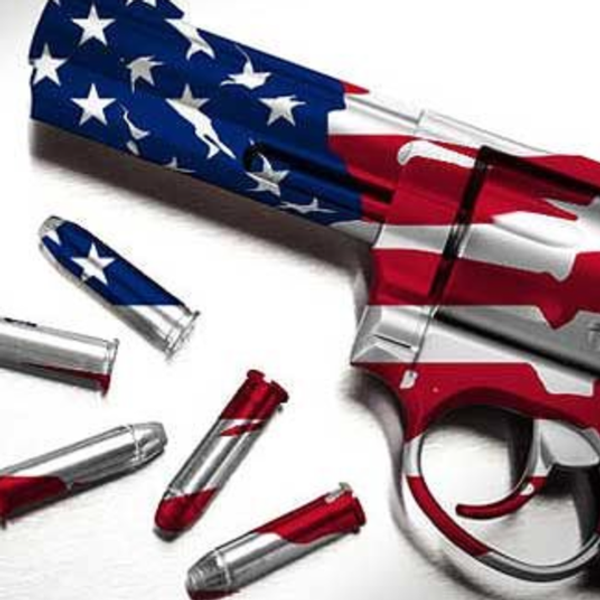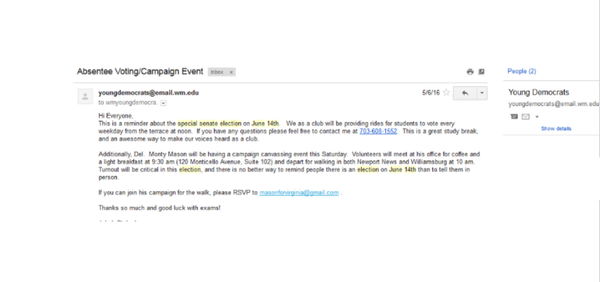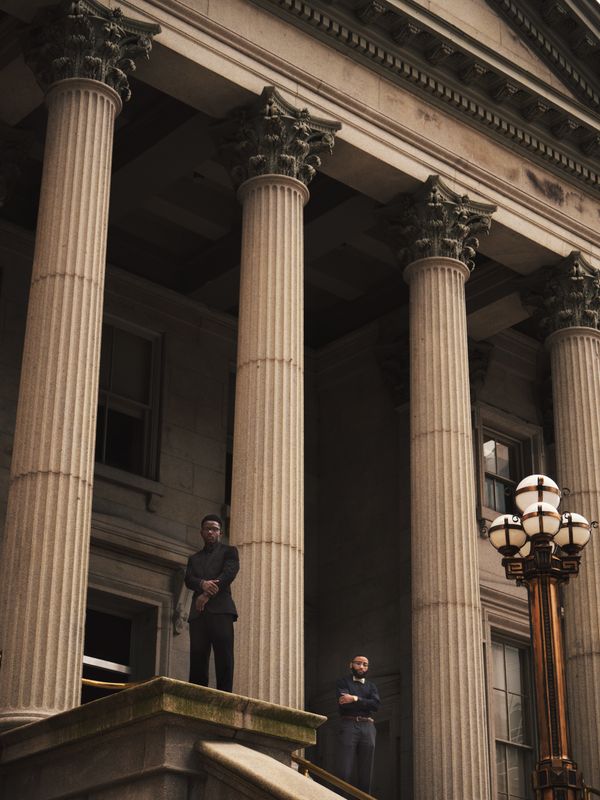On Dec. 14, 2012, 20-year-old Adam Lanza shot and killed his mother at home, and worse, 20 children and six adults at Sandy Hook Elementary School.
It was later found that Lanza had a mental illness and had stolen several guns, including a 0.223-caliber Bushmaster XM-15 E2S rifle, which he used in the killings.
This devastating incident should not have occurred, and could have been prevented if Lanza had not had access to guns. The Sandy Hook tragedy reignited the controversial debate around the nation regarding gun control and the meaning of the Second Amendment in the Constitution of the United States of America.
Contrary to some interpretations of the Second Amendment, the founding fathers did not intend for weapons to be available to the masses without proper regulation, and thus the Second Amendment must be interpreted with respect to modern weaponry and technology.
The official wording of the Second Amendment is as follows:
“A well regulated Militia, being necessary to the security of a free State, the right of the people to keep and bear Arms, shall not be infringed.”
The wording itself, let alone its meaning, has been contested throughout history, even before the amendment was formally added to the Bill of Rights. The founding fathers recognized the need for weapons, specifically firearms, to be paramount after the Revolutionary War, mainly for the purpose of defending the people from tyrannical government. Additionally, firearms were a part of daily life – hunting for food, claiming land that belonged to the Native Americans, and fighting in the war all required guns and ammunition. Once the need for firearms was identified, the newly unified states began to submit their proposals for the wording of the amendment, some more restrictive than others. States such as Pennsylvania, New Hampshire, New York, Rhode Island and Virginia wanted explicit amendments that restricted the government from removing any weaponry from the people. Eventually, the current wording was accepted by the states.
The Second Amendment has been described as having two clauses: the prefatory clause and the operative clause. The prefatory clause entails the part about “a well-regulated Militia, being necessary to the security of a free State.” The Antifederalists feared that the Federal Government might disarm the people to disable the citizens' militia, enabling a politicized standing army. In order to prevent this, they denied Congress the right to remove the people’s arms, and thus ensured the security of the people in the case of tyranny by government. This clause also allowed ordinary civilians to obtain and operate firearms. The operative clause is the second part of the amendment: “the right of the people to keep and bear Arms, shall not be infringed.” This part is the most controversial among historians and politicians because it can be interpreted in a multitude of ways. However, there is only one explanation of the founding fathers’ intentions that is truly plausible and coherent - to simply protect the people from tyranny, injustice and danger.
The most common weapons during the 18th century were muskets, which could only be fired after a lengthy and laborious process. Aaron Burger at Columbia University says that “a competent user could generally only take a single wildly inaccurate shot, and then would likely find himself rummaging around with a ram-rod (and a powder bag he had to tear with his teeth) for as much as a minute before being able to take another.”
This is crucial to understanding the Second Amendment, and why it must be interpreted carefully today. If a gun-carrying crazed madman fired into a crowd of people or at a school, he or she would be able to injure one or two people at most. By the time the shooter reloaded, someone would be able to stop them or knock them out to prevent further injuries.
However, today’s society has tiny handguns at their disposal. A person could easily fire multiple shots with a handgun into a crowd, in the same duration it previously took to fire one shot from a musket. Moreover, no civilian would attempt to stop the shooter, since the shooter could just as easily turn and shoot them quickly at close range. Furthermore, with conceal-and-carry laws, shooters can easily hide handguns in bags or purses, unlike a musket, which was big and bulky and difficult to conceal.
Thus, the interpretation of the constitution must be adapted and ever-changing. The founding fathers wrote the amendment based on the firearms in existence at that time – they never imagined the level of technology present today. To interpret the constitution in a literal sense is ridiculous due to the nature of circumstances today.
It is clear that firearms have undergone significant evolution; the dominant weapon in the hands of the civilian has gone from being the musket/primitive rifle to an AK-47/handgun. These handguns, though much more portable and small, are exponentially more powerful than muskets. Soldiers have even more advanced equipment compared to civilians. But for all the change that firearms have undergone, the regulations on firearms have hardly changed, if at all. With more advanced weaponry, the regulations should become stricter and make it more difficult for people to obtain guns.
Even during the Revolutionary period, there were strict regulations on guns. There were laws that prevented people from keeping a gun in the house, even for militia and other military purposes. There were also laws that made the weapons subject to random inspection, prevented them from being used in towns, and even prevented them from being owned by certain groups or individuals. These laws are stricter than the ones in place today, and yet they were just for muskets and rifles. Today, people are able to obtain guns with a simple background check, because waiting periods are not federally mandatory. This seems obviously counterintuitive; however, opponents of gun control believe that even this background check is too much regulation on a commercially sold item.
The Supreme Court seems to have taken this into consideration in cases pertaining to gun control over the last few decades. In District of Columbia v. Heller, the U.S. Supreme Court acknowledged “a Second Amendment right to bear arms outside of service in established militia and apart from possession of weapons held for militia service.” However, this ruling came with provisions for safety and correct usage of arms. They Court specifically stated that it was not a right to keep and carry a weapon for any reason whatsoever, based on the precedent of United States v. Miller. In this case, Jack Miller was transporting a double barrel 12-gauge shotgun in interstate commerce and was accused of violating the National Firearms Act (NRA). Miller argued on the basis that the NRA violated the Second Amendment, and the main question became whether the Second Amendment protected an individual right to having firearms. The Court ruled against Miller, saying that the shotgun did not have a reasonable relationship to the preservation or efficiency of a “well-regulated militia,” resulting in a lack of protection from the Second Amendment. Thus, even the Supreme Court recognizes the need for a stronger regulation of firearms as well as the need for a looser interpretation of the Constitution.
However, there are still many people that believe that less regulation is better and that this will result in fewer mass shootings, like Sandy Hook and the Sikh temple shootings. Additionally, they believe that the Second Amendment should be interpreted literally. Both of these arguments are faulty for several important reasons. First, less regulation means virtually no regulation of guns at all, since the only federal legislation for gun control is for background checks. With an even simpler background check, nearly everyone will be able to purchase a gun, and more lives are in danger. Furthermore, with today’s advanced weaponry, the number of people injured by a mass shooting will multiply exponentially. This is no longer the age of muskets and packets of powder, and it is ridiculous to base our gun regulations on the types of firearms that existed when the founding fathers wrote the Second Amendment. The amendment must be interpreted with respect to the century and technology it was authored in.
Additionally, the Supreme Court, while ensuring that the people’s rights are not infringed upon, as in District of Columbia v. Heller, is still including provisions for increased regulation and safety measures. One example of this occurred when the Court refused to incorporate the Second Amendment under the Fourteenth Amendment. The first section prevents states from encroaching on the privileges of U.S. citizens. The attorneys argued that this provision applies to the Second Amendment because it is an individual, guaranteed right. However, the Court refused to believe that the ownership of firearms is a birthright of U.S. citizens. The following sentence appears in the final opinion: “The right to drill or parade with arms, without, and independent of, an act of Congress or law of the state authorizing the same, is not an attribute of national citizenship.” Though the opponents of gun control may argue that since the Commerce Clause applies to firearms, the Fourteenth Amendment should apply as well. However, the Commerce Clause is fundamentally different, since it regulates the interstate trade. The purchase, sale, and transportation of firearms as a commodity are considered trade and commerce, and thus they fall under the Commerce Clause. The Fourteenth Amendment is subjective to the situation. Thus both of the opposing arguments are faulty.
Gun control is a divisive topic in today’s society. However, it should not be as divisive as it currently is because the language in the Second Amendment can be easily interpreted. The founding fathers wrote the amendment while keeping in mind the weapons used during that time period. They certainly did not intend for the weapons to be available to the masses without proper regulation, as shown by their strict regulations on firearms even for soldiers, let alone civilians. However, the power of these weapons has substantially increased, and thus the Second Amendment must be interpreted with respect to modern weaponry and technology. To interpret the Constitution from a 1700s perspective is completely irrelevant to today’s situation because the Revolutionary and post-Revolutionary periods are fundamentally different from today. The Supreme Court has recognized this, and while they do guarantee the privileges asserted in the Second Amendment, they also make provisions for increased regulation of firearms. The Court also ruled that the Second Amendment does not fall under the Fourteenth Amendment, contrary to the views of the opponents of gun control. The opponents also feel that there is currently too much regulation on firearms. However, the only mandatory regulation is a background check before purchase, and if even this is removed, there will be virtually no regulation of firearms. To prevent another tragedy like Sandy Hook occurring, a stronger gun control policy must be enforced. The founding fathers would certainly have approved.





















